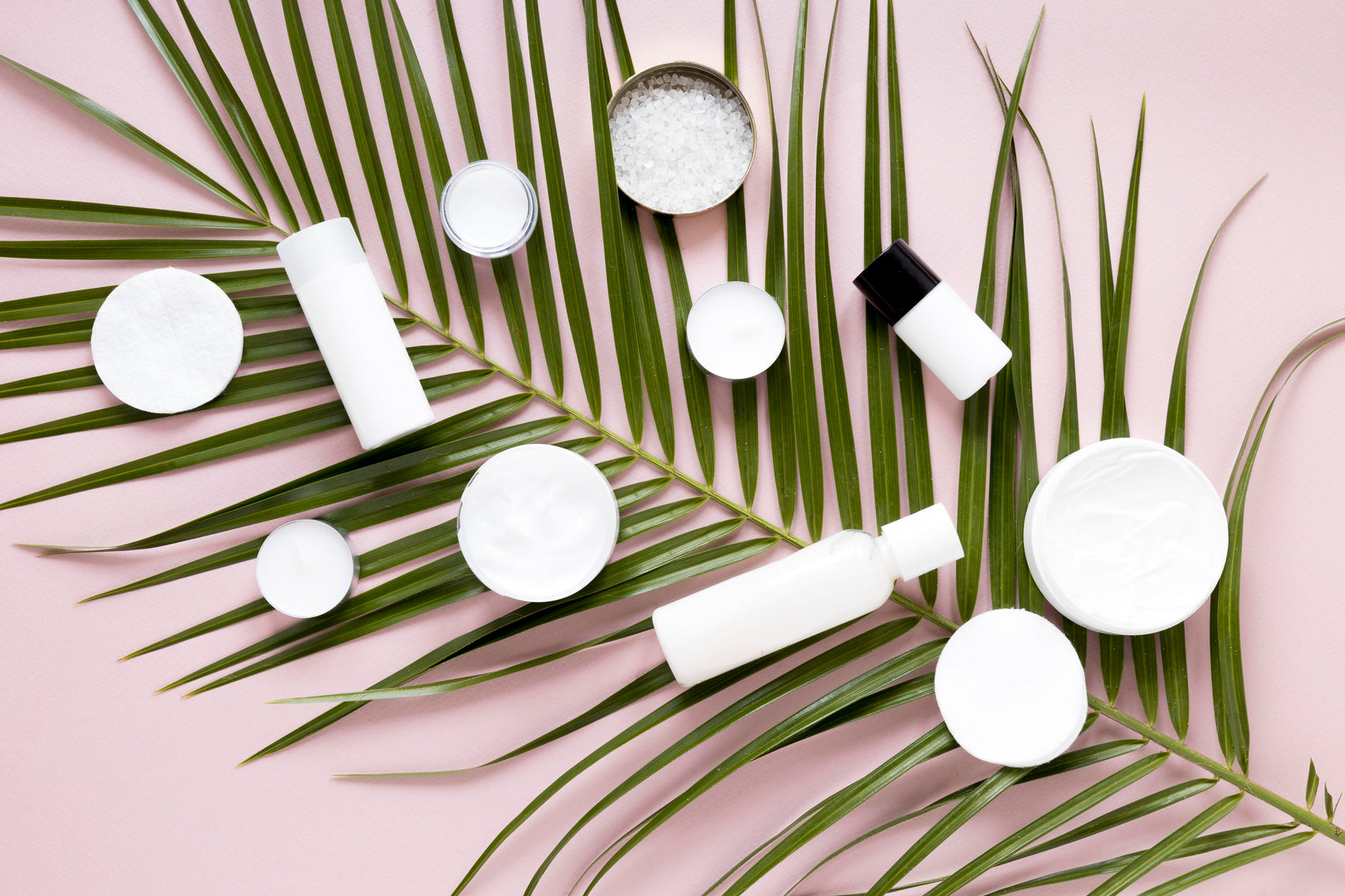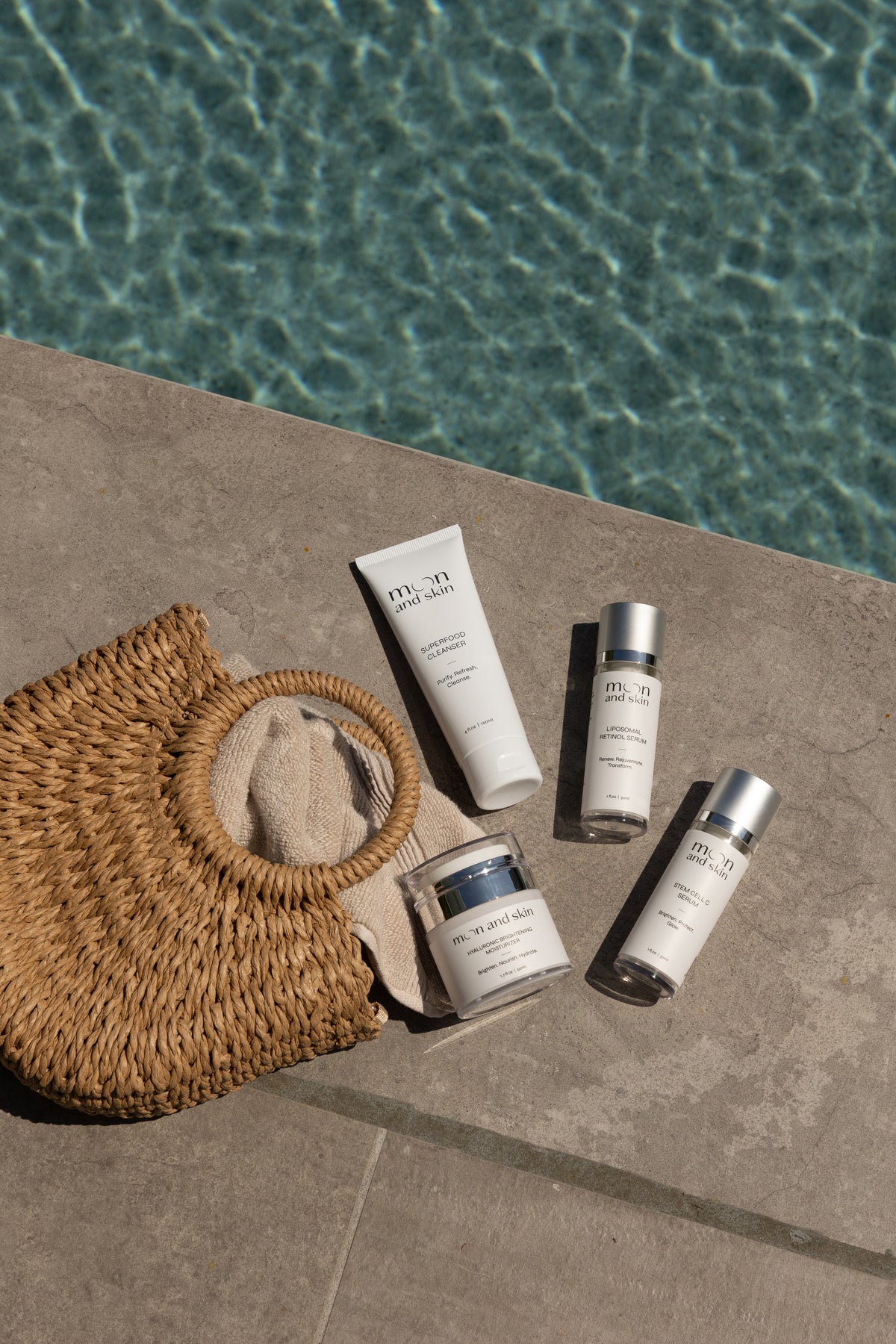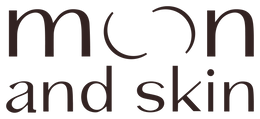Table of Contents
Introduction
Did you know that retinol, a form of vitamin A, is one of the most researched and effective ingredients in skincare? Its popularity has soared in recent years, with many beauty enthusiasts and skincare aficionados touting its transformative effects on the skin. However, navigating the world of retinol can be overwhelming, especially with so many products and varying claims. We understand that navigating this landscape can be confusing, and that's why we're here to break it down for you.
In this blog post, we will explore how retinol works on the skin, its benefits, potential side effects, and how to effectively incorporate it into your skincare routine. We’ll provide insights into our own products, particularly our Liposomal Retinol Serum, which utilizes advanced technology to maximize the benefits of retinol while minimizing irritation. You’ll leave with a clearer understanding of retinol and how it can enhance your skincare journey.
What is Retinol?
Retinol is a type of retinoid, which is derived from vitamin A. It is often found in over-the-counter skincare products and is known for its ability to improve skin texture, reduce the appearance of fine lines and wrinkles, and treat acne. Unlike prescription-strength retinoids, which can be more potent and may require a doctor's approval, retinol provides a gentler yet effective option for many individuals looking to enhance their skincare routine.
How Does Retinol Work?
Retinol works by stimulating cellular turnover and promoting the shedding of dead skin cells, effectively revealing fresher and healthier skin underneath. When applied topically, retinol penetrates deep into the skin, where it is converted into retinoic acid, the active form of vitamin A. This conversion process enables retinol to bind to specific receptors in the skin, promoting changes at a cellular level that lead to visible improvements in skin texture and tone.
The Mechanisms Behind Retinol’s Efficacy
- Increased Cell Turnover: Retinol accelerates the rate at which skin cells renew themselves. This means that dead skin cells are shed more quickly, helping to unclog pores and reduce the likelihood of acne breakouts.
- Collagen Production: By stimulating fibroblasts in the dermis, retinol encourages the production of collagen, an essential protein that helps maintain skin's firmness and elasticity. This process not only helps reduce the appearance of fine lines and wrinkles but also promotes a plumper, more youthful complexion.
- Reduction of Hyperpigmentation: Retinol can help fade dark spots and uneven skin tone by inhibiting melanin production, making it an effective solution for those dealing with hyperpigmentation and sun damage.
- Improvement of Skin Texture: Regular use of retinol can lead to smoother skin surface texture by promoting exfoliation and reducing the appearance of enlarged pores.
- Anti-Inflammatory Properties: Retinol can help calm inflammation associated with acne, reducing redness and irritation while also preventing future breakouts.
Benefits of Using Retinol
The benefits of incorporating retinol into your skincare routine are numerous:
- Anti-Aging Effects: Retinol can significantly reduce the appearance of fine lines, wrinkles, and sagging skin, giving you a more youthful appearance.
- Acne Treatment: By unclogging pores and reducing inflammation, retinol can help prevent and treat acne breakouts.
- Smoother Skin: Regular use of retinol can lead to a smoother, more refined skin texture.
- Brightened Complexion: With its ability to promote cell turnover and reduce pigmentation, retinol can help brighten dull skin and enhance overall radiance.
How Our Liposomal Retinol Serum Stands Out
We’re proud to offer our Liposomal Retinol Serum, which utilizes a patented Centersome®RL liposomal complex. This innovative technology allows for effective absorption of retinol while minimizing irritation, making it suitable for even sensitive skin types. The serum delivers potent results without the harsh side effects often associated with traditional retinol products.
Potential Side Effects of Retinol
While retinol is celebrated for its benefits, it’s essential to be aware of potential side effects, especially for those new to this powerful ingredient. Common side effects may include:
- Dryness and Peeling: As your skin adjusts to retinol, you may experience dryness, flakiness, or peeling. This is often temporary and can be managed by adjusting usage frequency or incorporating a hydrating moisturizer.
- Redness and Irritation: Some individuals may experience redness or irritation, particularly during the initial stages of use. This can be mitigated by starting with lower concentrations and gradually increasing usage.
- Sun Sensitivity: Retinol can make your skin more sensitive to sunlight, increasing the risk of sunburn. It's crucial to apply sunscreen daily and limit sun exposure while using retinol.
Tips for Minimizing Side Effects
- Start Slow: If you're new to retinol, begin by applying it once or twice a week and gradually increase to nightly use as your skin builds tolerance.
- Moisturize: Pairing retinol with a hydrating moisturizer, such as our Hyaluronic Brightening Moisturizer, can help combat dryness and irritation.
- Avoid Mixing with Certain Ingredients: Be cautious when combining retinol with other potent ingredients like AHAs or BHAs, as this can increase irritation. If you're unsure, consult with a skincare professional.
How to Incorporate Retinol Into Your Skincare Routine
Integrating retinol into your routine doesn't have to be daunting. Here’s a simple guide to get you started:
- Cleanse Your Skin: Start with a gentle cleanser, like our Superfood Cleanser, to remove impurities without stripping your skin's natural moisture.
- Patch Test: Before applying retinol to your entire face, conduct a patch test on a small area to check for any adverse reactions.
- Apply Retinol: Use a pea-sized amount of retinol and apply it evenly to your face, avoiding the eye area.
- Moisturize: Follow with a hydrating moisturizer to combat potential dryness.
- Sunscreen: Be diligent about using a broad-spectrum sunscreen during the day, as retinol increases sun sensitivity.
A Sample Routine
To illustrate how to incorporate retinol effectively, here’s a sample nighttime routine:
- Step 1: Cleanse with our Superfood Cleanser.
- Step 2: Apply the Liposomal Retinol Serum.
- Step 3: Follow with the Hyaluronic Brightening Moisturizer.
- Step 4: Keep the routine consistent, gradually increasing the frequency of retinol use as tolerated.
FAQs about Retinol
Is retinol suitable for all skin types?
While retinol can benefit various skin types, those with sensitive skin may need to proceed with caution. Starting with lower concentrations and gradually increasing usage can help mitigate potential irritation.
How long does it take to see results from retinol?
Results can vary, but most individuals begin to notice improvements in skin texture and tone after about 4 to 12 weeks of consistent use.
Can I use retinol during the day?
Retinol is best used at night, as it can increase sun sensitivity. Always apply broad-spectrum sunscreen during the day when using retinol.
Can I use retinol with other active ingredients?
It’s advisable to avoid using retinol with other potent actives like AHAs or BHAs initially, as this can lead to increased irritation. However, many users successfully combine these ingredients with careful planning and timing.
What should I do if I experience irritation from retinol?
If you experience irritation, reduce the frequency of use, incorporate a hydrating moisturizer, and consider consulting a skincare professional for personalized advice.
Conclusion
In summary, retinol is a powerful ally in the quest for healthy, youthful skin. With its ability to stimulate collagen production, improve texture, and reduce signs of aging, it’s no wonder this ingredient has remained a staple in skincare for decades. Our Liposomal Retinol Serum offers a gentle yet effective way to harness the benefits of retinol without the harsh side effects.
We encourage you to explore our Bundle & Save collection to build a comprehensive skincare routine that includes our core products, ensuring your skin receives the care it deserves at every stage of life. Together, let’s embark on this skincare journey and celebrate the beautiful evolution of your skin.
By understanding how retinol works on the skin and incorporating it thoughtfully into your routine, you can achieve the glowing, healthy complexion you've always desired. If you have any questions or need personalized advice, feel free to reach out to us. We're here to support you on your skin journey!







